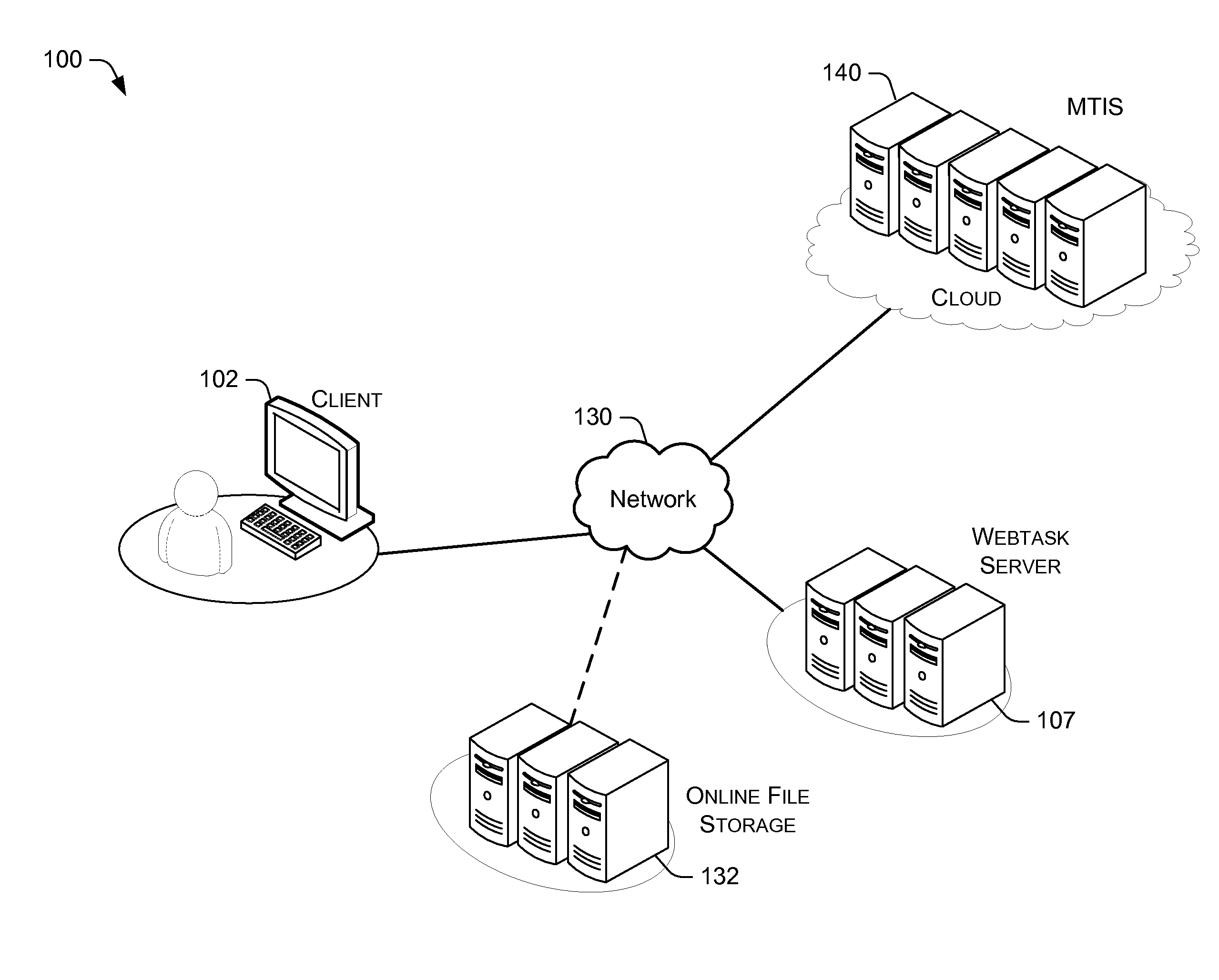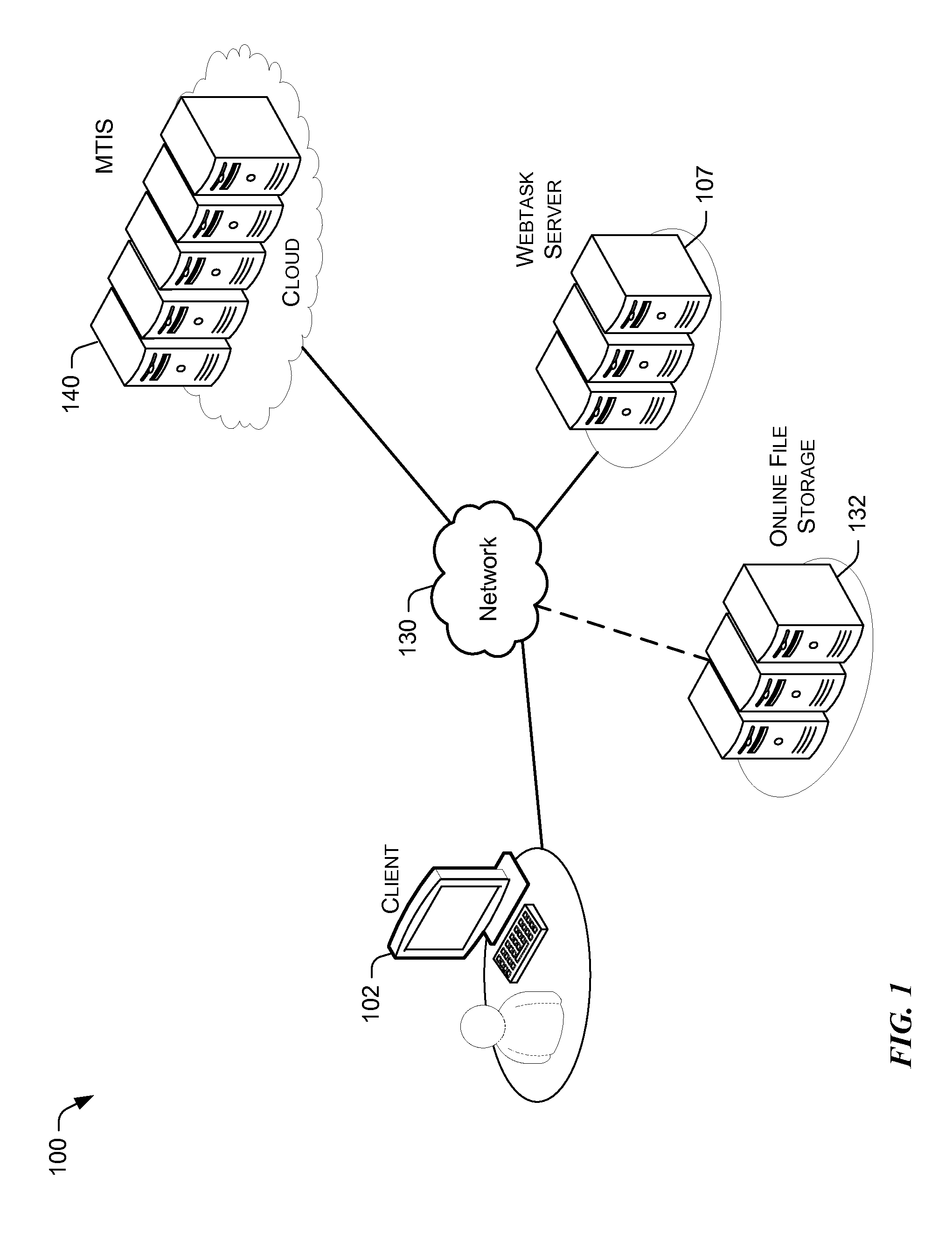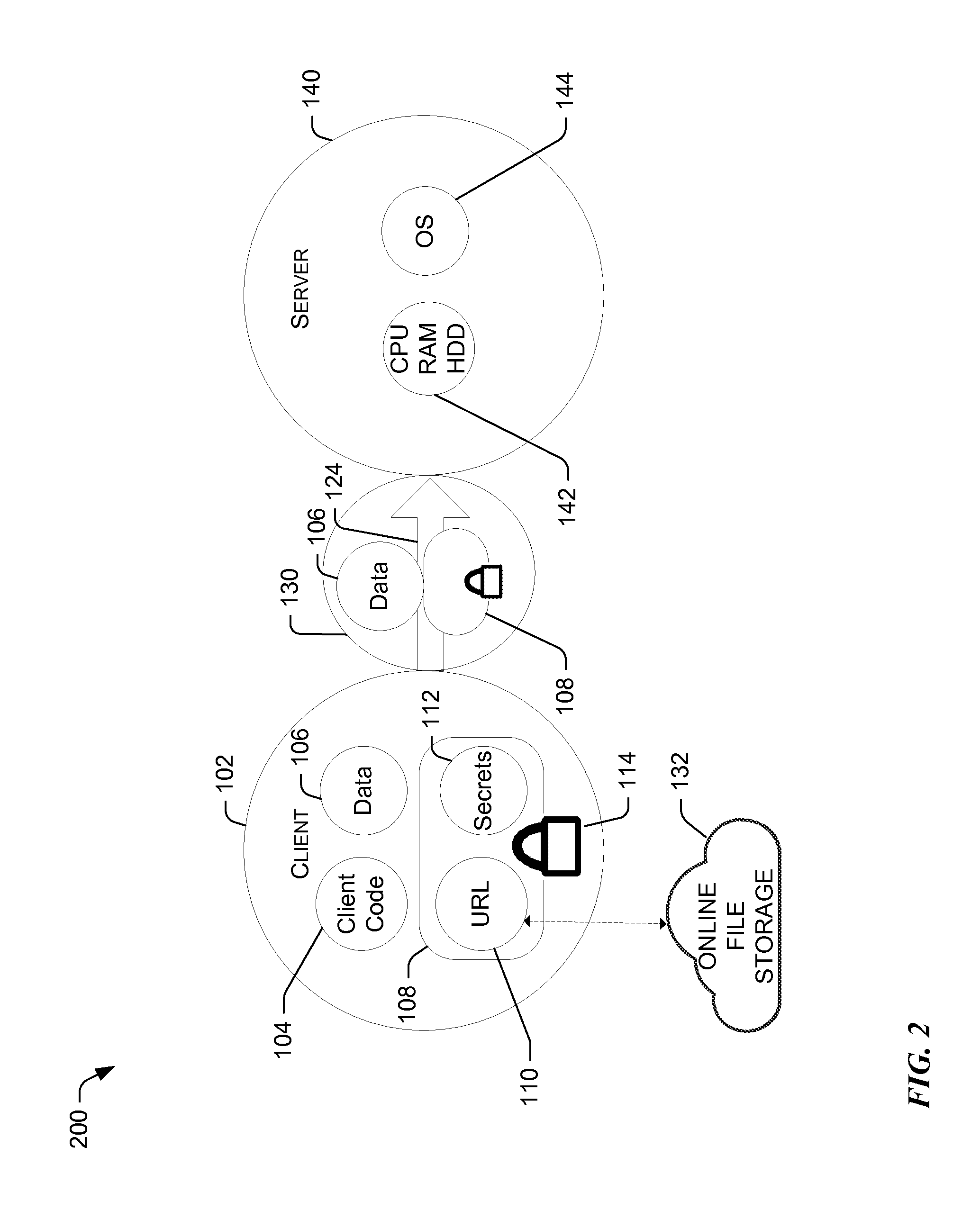Multi-tenancy via code encapsulated in server requests
a server request and multi-tenancy technology, applied in the field of multi-tenancy via code encapsulation in server requests, can solve the problems of large high cost of hosting an application, and high cost of physical machine provisioning and allocation,
- Summary
- Abstract
- Description
- Claims
- Application Information
AI Technical Summary
Benefits of technology
Problems solved by technology
Method used
Image
Examples
example functional
Blocks
[0022]Reference now is made to FIG. 2, which illustrates a block diagram of the data framework for executing code (e.g., a computer routine) in multi-tenant containers. System 100 illustrates a client 102 communicating with a server 104 via a network 130.
[0023]The server 140 may operate on a cloud and include raw computing resources 142, such as CPU, memory, disk, etc., as well as an operating system 144. Thus, server 140 provides raw computing resources 142 and an operating system, which can be viewed as a cloud commodity. Server 140 provides the backend for an application in the form of a computer routine to be run. What is notably missing from the server 140 is server code that implements part of the application logic as well as secrets this code requires to access protected data or functionality, such as database connection strings, API keys, etc. Both server code and the secrets are data that are serialized together into one bundle 108 and can now be found in the client 1...
example call
Flow Process
[0051]With the foregoing overview of the multi-tenancy via code encapsulated in server requests system, it may be helpful now to consider a high-level discussion of example call flow processes. To that end, FIG. 4 illustrates a high level example call flow process for executing a code (e.g., computer routine) in a multi-tenant infrastructure environment, wherein the executed computer routine is non-persistent. The call flow process 400 is illustrated as a collection of steps in a logical call flow, which represents a sequence of operations that can be implemented in hardware, software, or a combination thereof. In the context of software, the steps represent computer-executable instructions that, when executed by one or more processors, perform the recited operations. Generally, computer-executable instructions may include routines, programs, objects, components, data structures, and the like that perform particular functions or implement particular abstract data types. ...
example use cases
[0062]With the foregoing explanation of the system and method of encapsulating computer routine in a server request, it may be helpful to provide a high level discussion of some example use cases. The concepts and system discussed herein can be applied to various use cases. For example, they may be applied to distributed applications, where an application may be architected into separate components, each designed to operate independently of others. Those separate components can send the computer routine to be executed via the MTIS 140 to different instances.
[0063]In on example, the system described herein can be used for offloading. To that end, an application may execute a routine either locally or remotely using the MTIS 140. In situations where the local computing resources are not available or are insufficient, the application may offload computing requests to the cloud via the MTIS 140.
[0064]In one example, the concepts discussed herein can be used for scripting WEB services. A...
PUM
 Login to View More
Login to View More Abstract
Description
Claims
Application Information
 Login to View More
Login to View More - R&D
- Intellectual Property
- Life Sciences
- Materials
- Tech Scout
- Unparalleled Data Quality
- Higher Quality Content
- 60% Fewer Hallucinations
Browse by: Latest US Patents, China's latest patents, Technical Efficacy Thesaurus, Application Domain, Technology Topic, Popular Technical Reports.
© 2025 PatSnap. All rights reserved.Legal|Privacy policy|Modern Slavery Act Transparency Statement|Sitemap|About US| Contact US: help@patsnap.com



